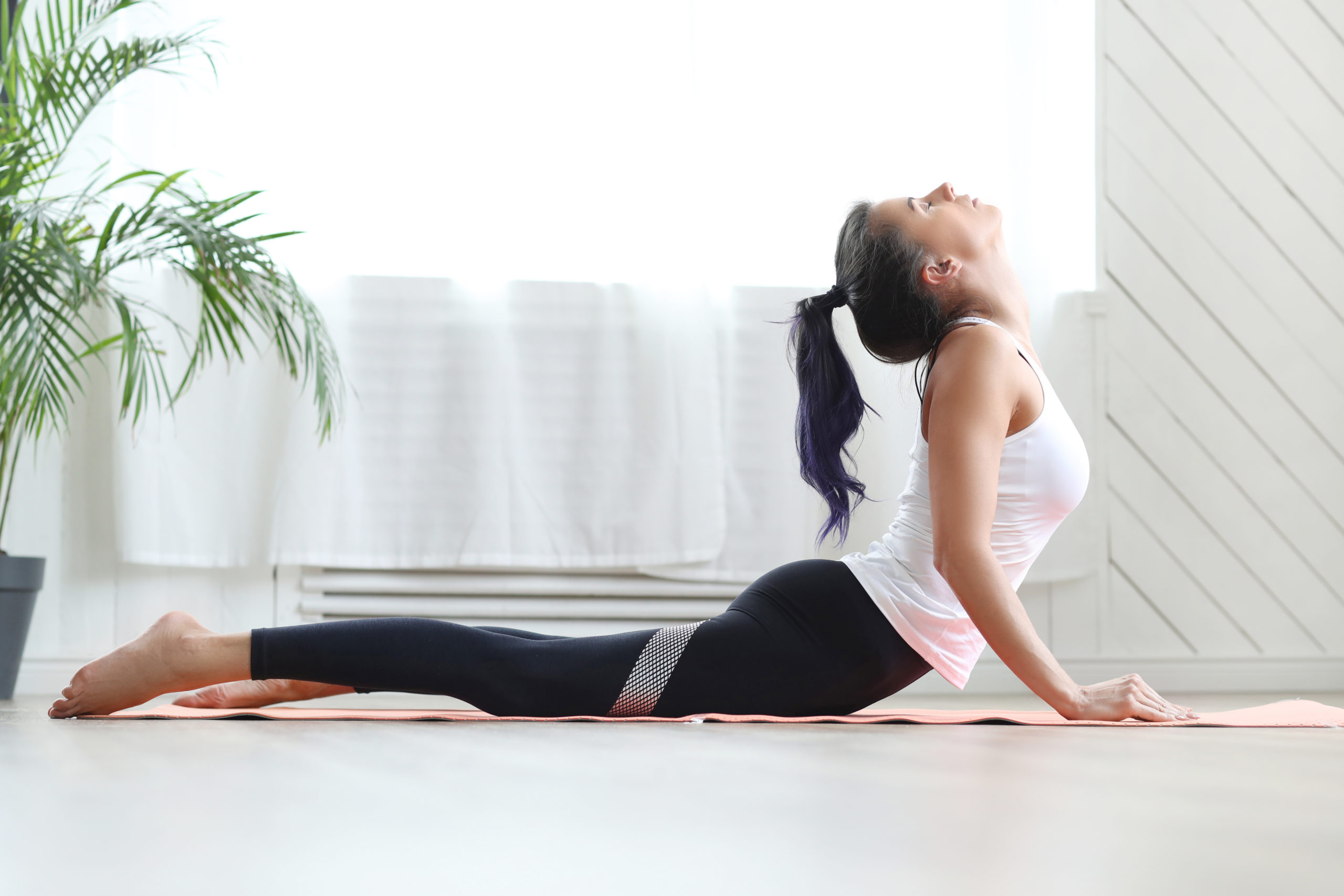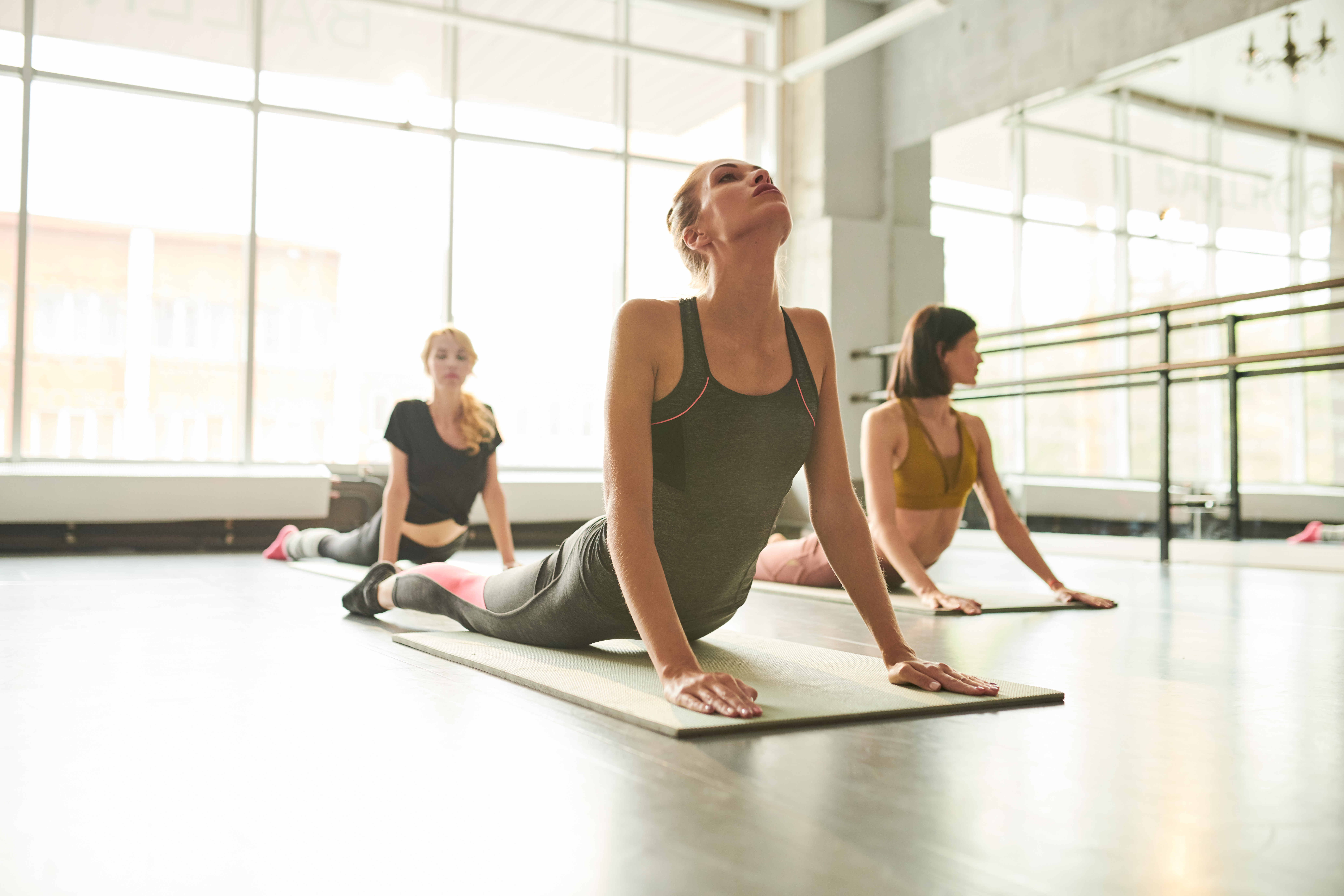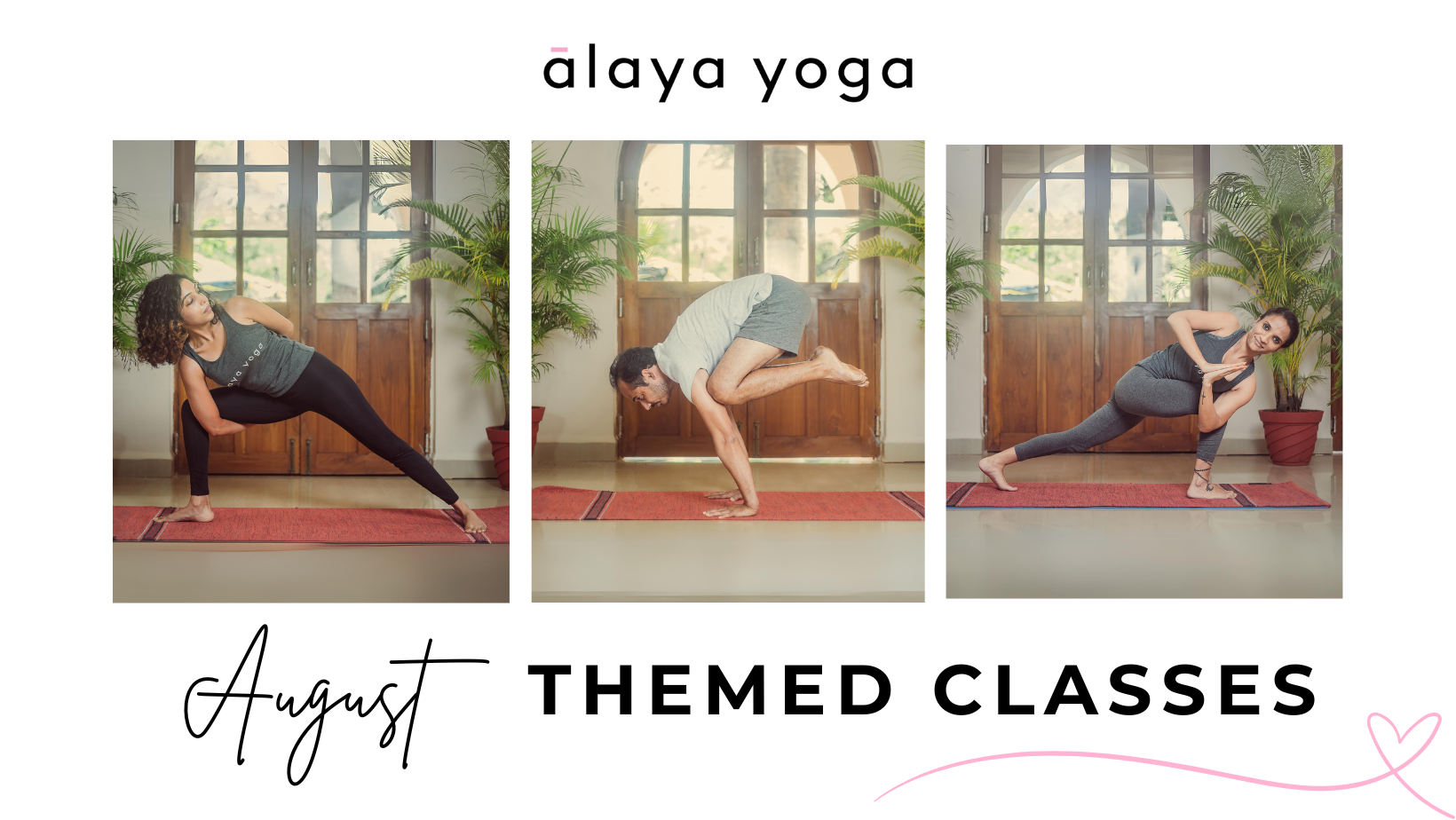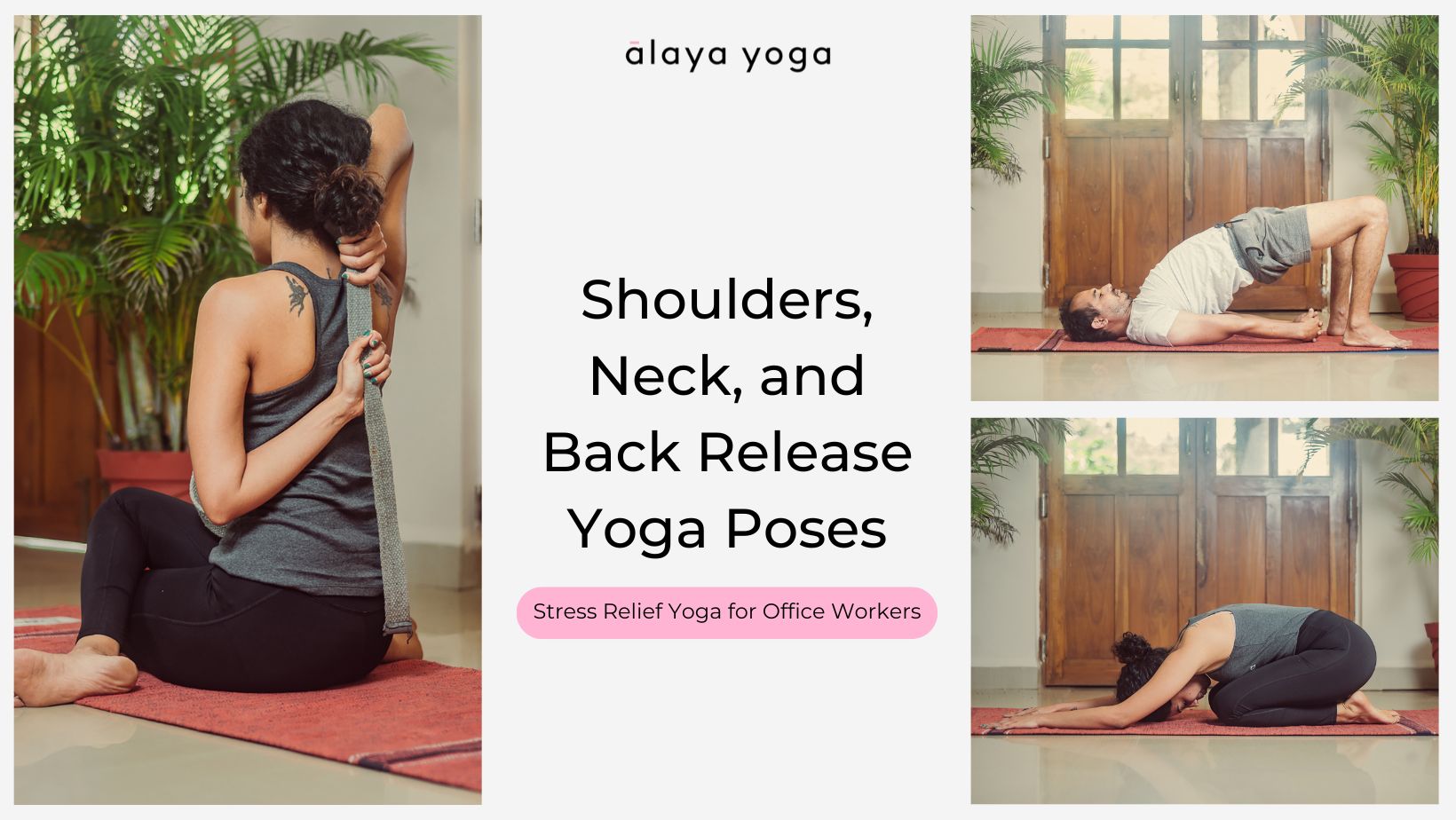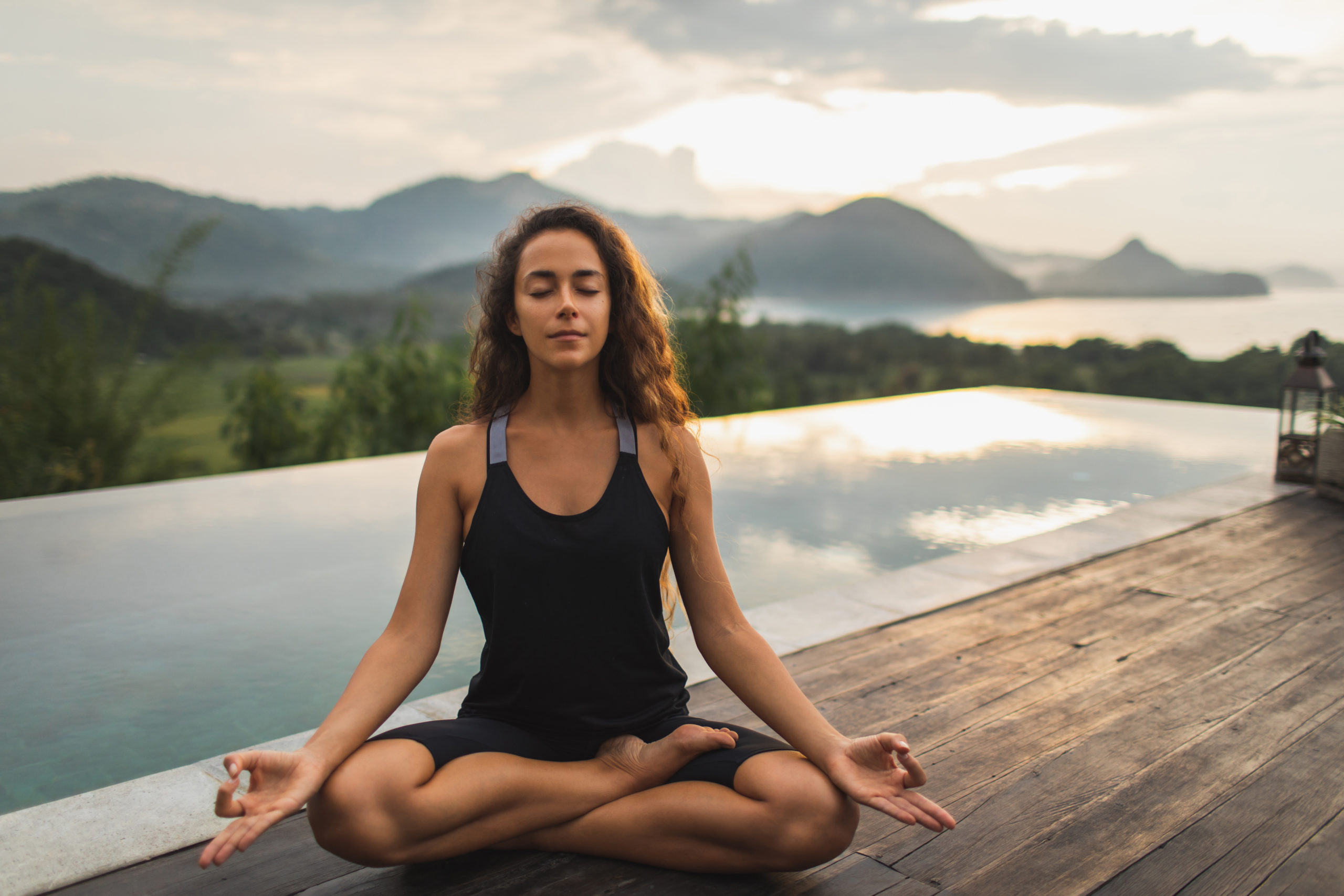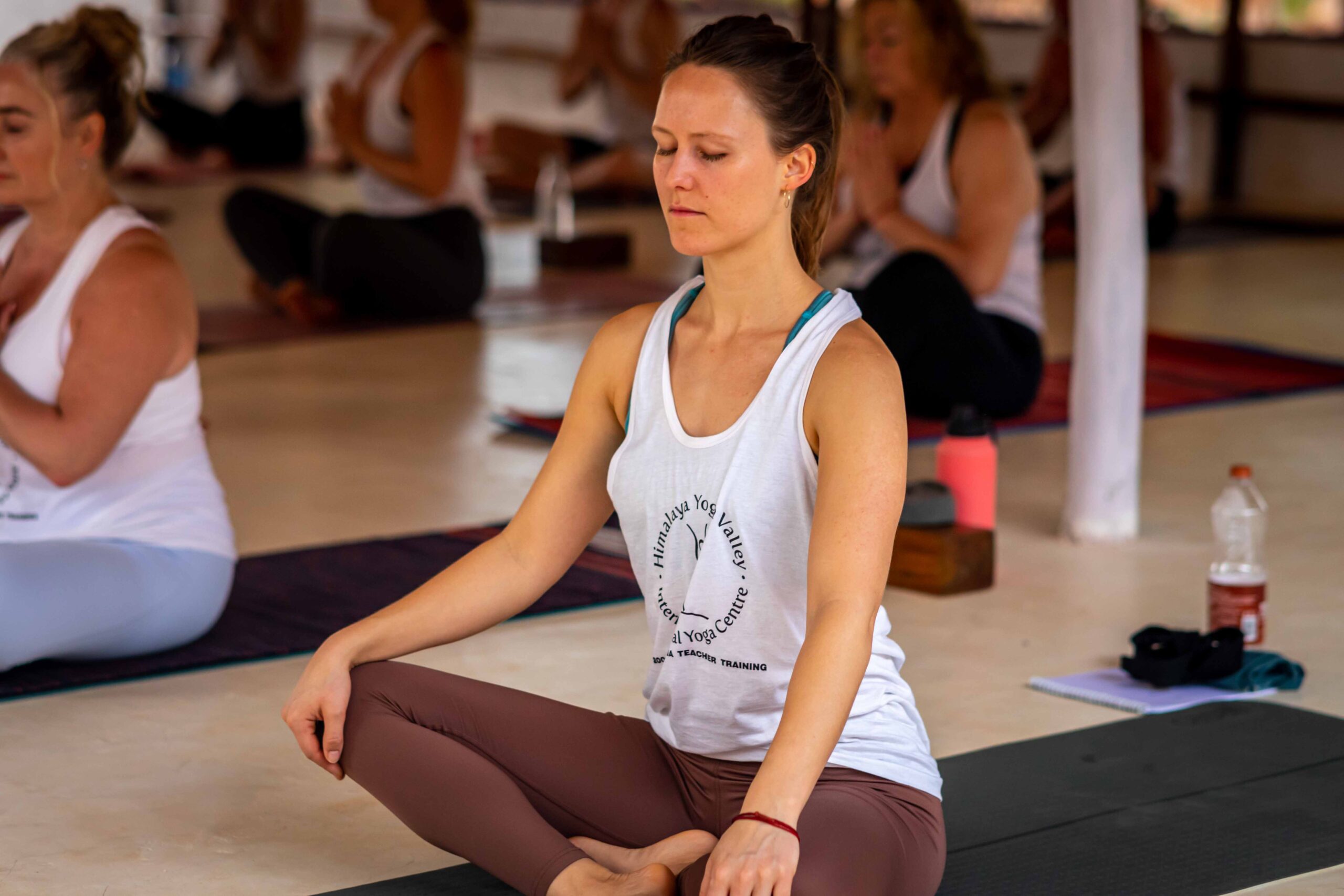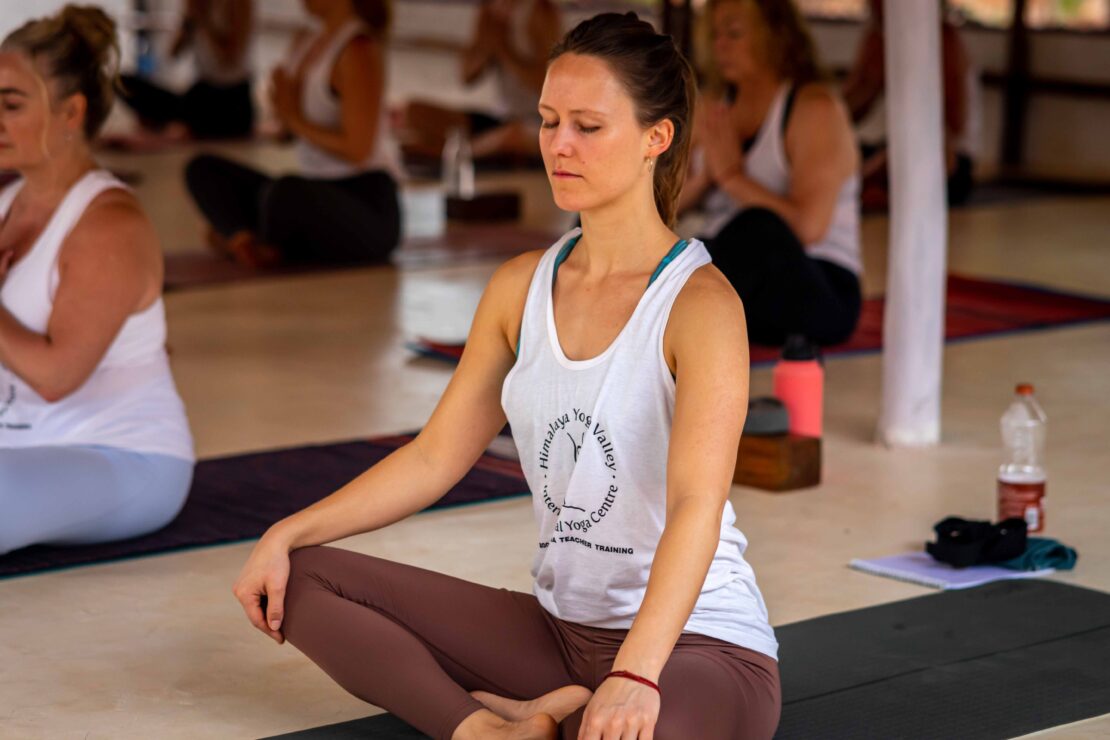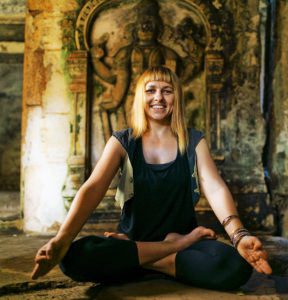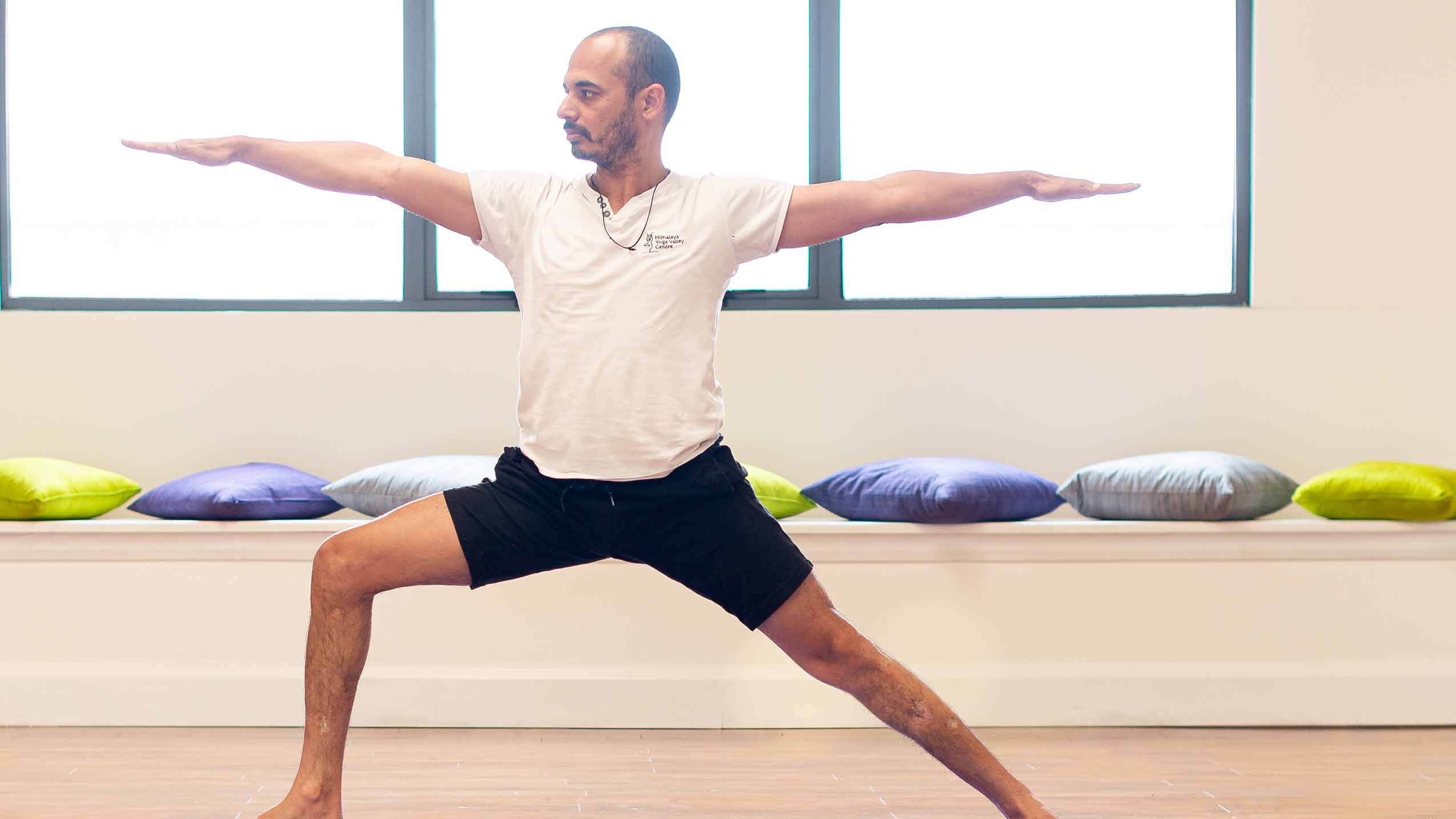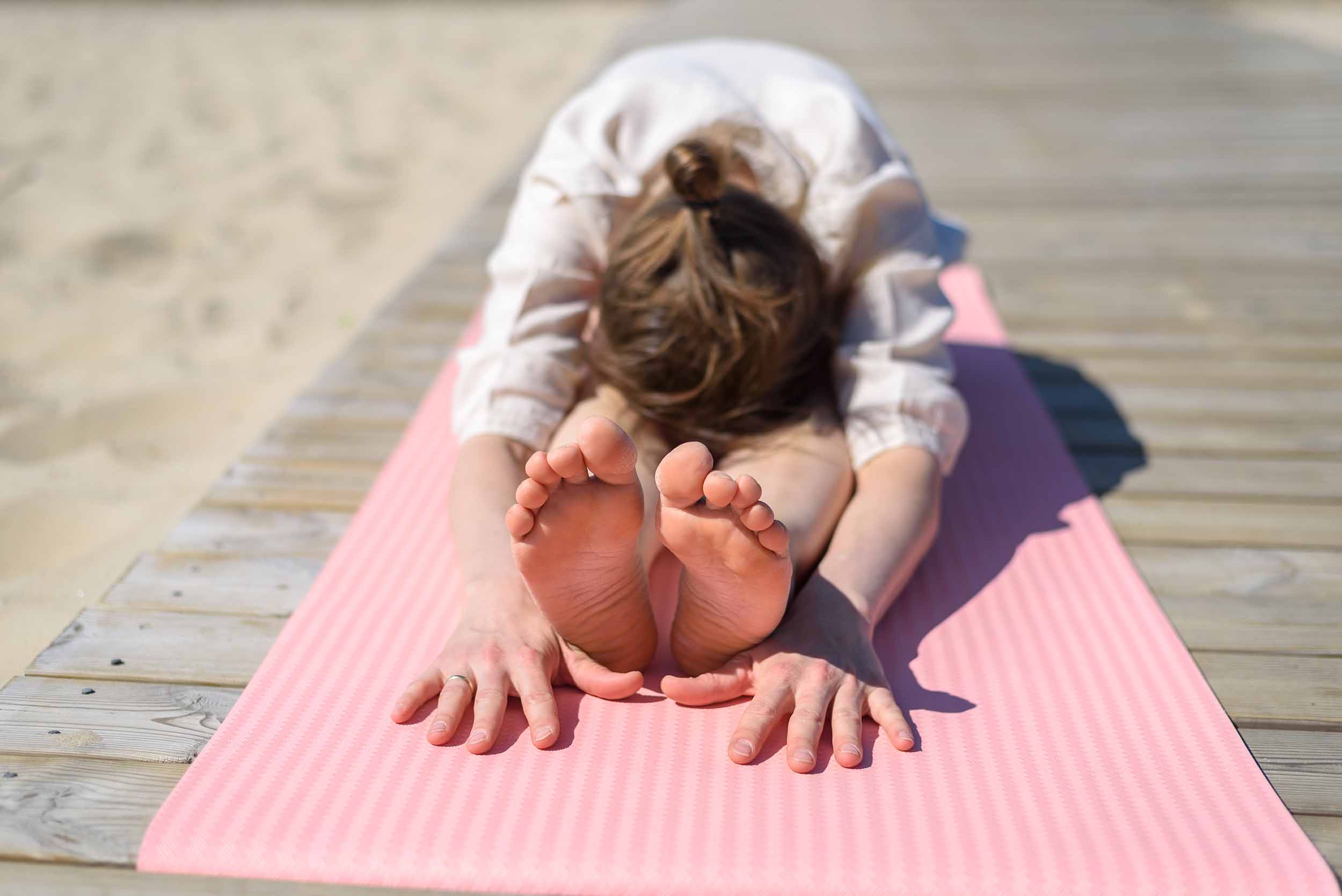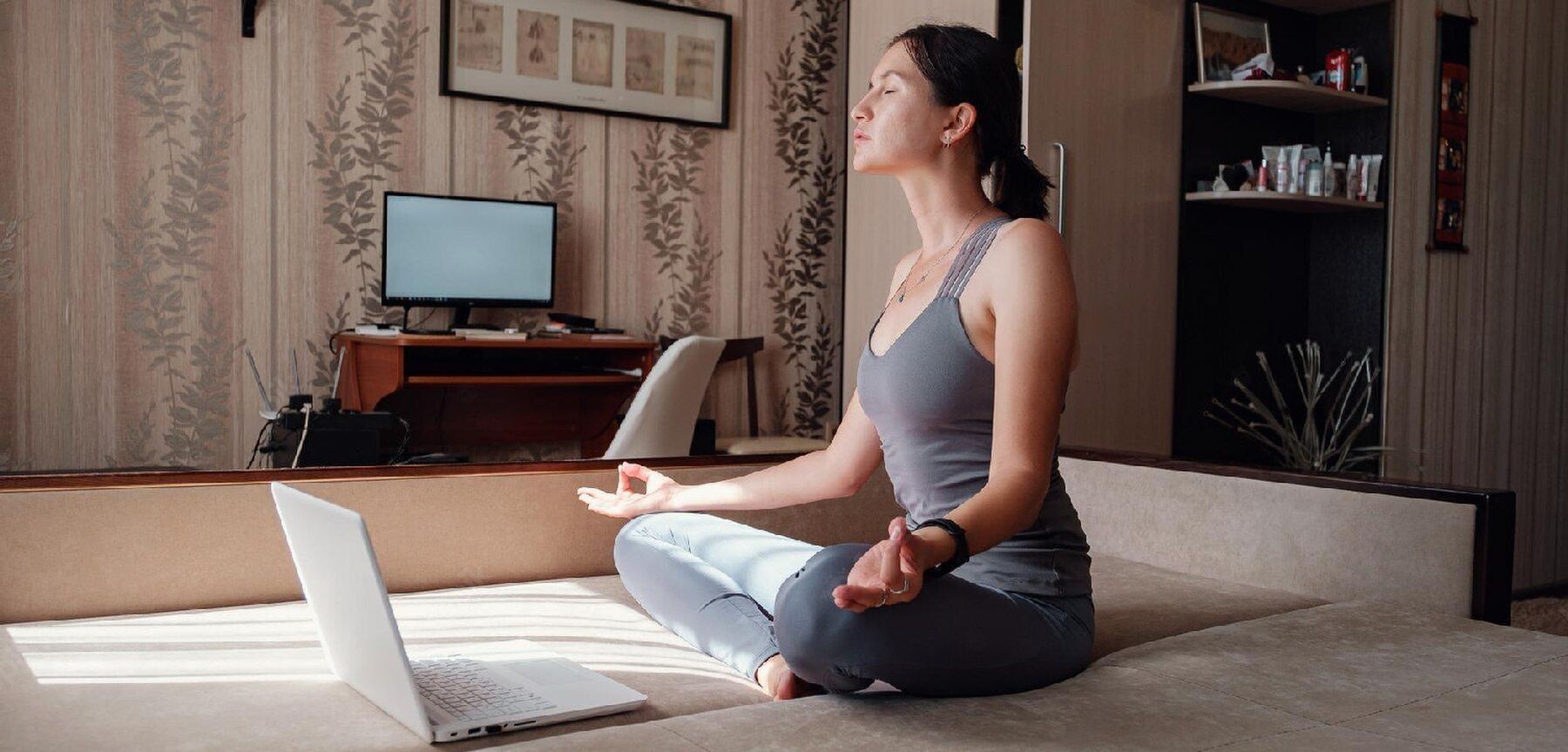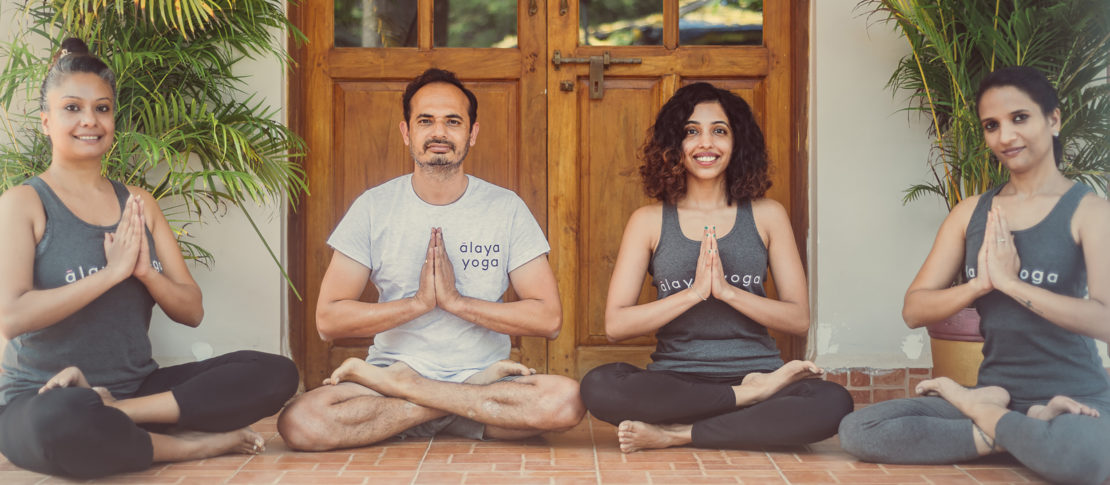Are you a runner or an athlete looking to enhance your performance and prevent injuries? Look no further than yoga! Yoga is not just for flexibility and stress relief, but it can also be a game-changer for runners and athletes. This ancient practice has been proven to improve strength, balance, and endurance while reducing the risk of injury. One of our most popular classes at Ālaya Yoga Online is “Yoga for Runners and Athletes” with our resident anatomy guru and Yoga Teacher Trainer for Himalaya Yoga Valley, Adam Divine- every Saturday at… Read on to find out why our clients love to come together on a Sunday and dive deep into the mechanics of yoga and breath with Adam
The Benefits of Yoga for Runners and Athletes
Yoga offers a multitude of benefits for runners and athletes. One of the key advantages is improved flexibility and mobility. Runners often experience tight muscles and limited range of motion, which can lead to injuries. By incorporating yoga into your training routine, you can increase your flexibility, which is vital for preventing muscle strains and sprains. Moreover, yoga helps to strengthen the muscles that support your joints, reducing the risk of overuse injuries. This combination of flexibility and strength is essential for athletes looking to perform at their best and stay injury-free.
In addition to physical benefits, yoga also provides mental advantages. The focus on breath control and mindfulness in yoga can help athletes develop better concentration and mental clarity, leading to improved focus during competitions. Yoga can teach you to stay present and focus on the task at hand, allowing you to tune out distractions and perform at your peak. This mental strength can be a game-changer for athletes looking to excel in their respective sports.
How Yoga Improves Flexibility and Mobility
Flexibility plays a crucial role in the performance of runners and athletes. Yoga is particularly effective in improving flexibility and mobility due to its emphasis on stretching and lengthening muscles. The various yoga poses help to target specific muscle groups and release tension, allowing for increased flexibility over time. The consistent practice of yoga can help runners and athletes achieve a greater range of motion, which in turn leads to improved performance and reduced risk of injury.
One of the key components of yoga that contributes to improved flexibility is the focus on deep stretching and holding poses for an extended period. This allows the muscles to relax and lengthen gradually, promoting increased flexibility over time. Yoga poses such as Downward Dog, Warrior I, and Triangle Pose are particularly beneficial for runners and athletes as they target the major muscle groups used during physical activity. Practicing these poses regularly can help improve flexibility in the hips, hamstrings, quadriceps, and calves, which are areas prone to tightness in runners and athletes.
Yoga Poses for Runners and Athletes
Yoga offers a wide range of poses that can benefit runners and athletes. These poses target specific muscle groups and help to improve flexibility, strength, and balance. Incorporating these poses into your training routine can help enhance your performance and reduce the risk of injury.
- Downward Dog: This pose stretches and strengthens the entire body, particularly the hamstrings, calves, and shoulders. Start by coming into a high plank position and then lift your hips up and back, forming an inverted V shape with your body. Press your heels towards the floor and relax your head and neck. Hold for 5-10 breaths.
- Warrior I: This pose strengthens the legs, opens the hips, and stretches the chest and shoulders. Begin by stepping one foot forward into a lunge position, with the front knee bent at a 90-degree angle. Extend your arms overhead, keeping your shoulders relaxed. Hold for 5-10 breaths and repeat on the other side.
- Triangle Pose: This pose stretches the hamstrings, hips, and side body. Start by standing with your feet wide apart. Turn your right foot out and extend your arms parallel to the floor. Reach your right hand towards your right foot, allowing your left hand to reach towards the ceiling. Keep your chest and hips open. Hold for 5-10 breaths and switch sides.
Yoga for Injury Prevention and Recovery
Injuries are a common concern for runners and athletes. Fortunately, yoga can play a significant role in injury prevention and recovery. The combination of flexibility, strength, and balance gained from yoga helps to improve overall body mechanics and reduce the risk of overuse injuries.
Yoga focuses on strengthening the muscles that support the joints, such as the core, glutes, and hips. These muscles are crucial for maintaining proper alignment and absorbing impact during physical activities. By strengthening these muscles through yoga, runners and athletes can reduce the strain on their joints and decrease the likelihood of injury.
In addition to injury prevention, yoga can also aid in the recovery process. The gentle stretching and relaxation techniques of yoga can help alleviate muscle soreness and promote faster recovery after intense training sessions or competitions. Yoga also helps to increase blood flow and circulation, which aids in the delivery of oxygen and nutrients to the muscles, promoting healing and reducing inflammation.
Breathing Techniques in Yoga for Enhanced Performance
Breathing is a fundamental aspect of yoga, and it plays a crucial role in enhancing athletic performance. Yoga breathing techniques, also known as pranayama, can help athletes improve their endurance, focus, and overall performance.
One of the most commonly practiced breathing techniques in yoga is Ujjayi breath. This deep breathing technique involves inhaling and exhaling through the nose while constricting the back of the throat, creating an audible sound similar to the ocean waves. Ujjayi breath helps to regulate the breath, increase lung capacity, and create a sense of calm and focus. By incorporating Ujjayi breath into your training routine, you can improve your stamina and mental clarity during physical activities.
Another beneficial breathing technique for athletes is Kapalabhati breath, also known as skull-shining breath. This rapid and forceful breath involves forceful exhalations through the nose while the inhalations are passive. Kapalabhati breath helps to energize the body, clear the mind, and increase oxygen intake. Incorporating this technique into your warm-up routine can help prepare your body for physical activity and enhance your performance.
Yoga for Mental Focus and Stress Reduction
In addition to physical benefits, yoga also offers numerous mental benefits for runners and athletes. The practice of yoga involves mindfulness and focus, which can help athletes develop better concentration and mental clarity. This heightened mental state can have a significant impact on performance during training and competitions.
Yoga teaches athletes to stay present and focus on the present moment, which is crucial for achieving peak performance. By practicing mindfulness on the mat, athletes can learn to bring this state of awareness into their athletic pursuits. This ability to stay focused and present can help athletes make split-second decisions, react quickly to changes in the game, and maintain composure under pressure.
Furthermore, yoga provides a valuable tool for stress reduction. The physical demands and pressures of training and competing can take a toll on an athlete’s mental well-being. Yoga offers a space for athletes to release tension, quiet the mind, and cultivate a sense of inner calm. The combination of physical movement, breath control, and meditation in yoga helps to activate the parasympathetic nervous system, promoting relaxation and reducing stress levels.
Incorporating Yoga into Your Training Routine
Now that you understand the benefits of yoga for runners and athletes, it’s time to incorporate it into your training routine. Here are some tips to help you get started:
- Start with short sessions: Begin by dedicating 10-15 minutes to yoga practice a few times a week. As you become more comfortable, gradually increase the duration of your sessions.
- Choose the right classes or videos: Look for yoga classes or online videos specifically designed for athletes or runners. These classes will focus on poses and sequences that target the areas of the body most affected by running or athletic activities.
- Listen to your body: Pay attention to how your body feels during yoga practice. Some poses may feel challenging at first, but they should never cause pain. Modify or skip poses that feel uncomfortable and always prioritize safety.
- Combine yoga with your other training: Yoga should complement your existing training routine, not replace it. Incorporate yoga on rest days or as a warm-up or cool-down session before or after your workouts.
- Be consistent: Like any other form of training, consistency is key. Aim to practice yoga regularly to see the maximum benefits. Even a few minutes of yoga each day can make a difference in your overall performance and well-being.
Yoga Props and Equipment for Runners and Athletes
While yoga can be practiced with minimal equipment, certain props can enhance your yoga practice and provide additional support for runners and athletes. Here are some commonly used yoga props and equipment:
- Yoga mat: A good-quality yoga mat provides stability and cushioning during yoga practice. Look for a mat with good grip to prevent slipping, particularly if you tend to sweat during your workouts.
- Yoga blocks: Blocks are helpful for modifying poses and providing support for runners and athletes with limited flexibility. They can be used to bring the floor closer to you, allowing you to maintain proper alignment and prevent strain.
- Yoga strap: A yoga strap is a useful tool for increasing flexibility and reaching deeper into stretches. It can be used to extend your reach and hold poses that may otherwise be challenging.
- Yoga bolster: Bolsters are long, firm pillows that provide support and help to deepen relaxation during restorative yoga poses. They can be particularly beneficial for athletes looking to recover and rejuvenate their bodies after intense training sessions.
Yoga Retreats and Workshops for Runners and Athletes
If you’re looking to immerse yourself in a yoga experience specifically tailored for runners and athletes, consider attending a yoga retreat or workshop. These specialized programs offer a unique opportunity to learn from experienced instructors and connect with like-minded individuals.
Yoga retreats for runners and athletes often combine yoga classes, workshops, and outdoor activities such as trail running or hiking. These retreats provide a supportive and nurturing environment for athletes to deepen their yoga practice, learn new techniques, and gain valuable insights from experts in the field.
Workshops focused on yoga for runners and athletes offer a more condensed learning experience, usually spanning a few hours or a full day. These workshops typically cover specific topics such as injury prevention, recovery, or enhancing performance through yoga. Attending a workshop can provide you with valuable knowledge and techniques that you can incorporate into your regular training routine.
